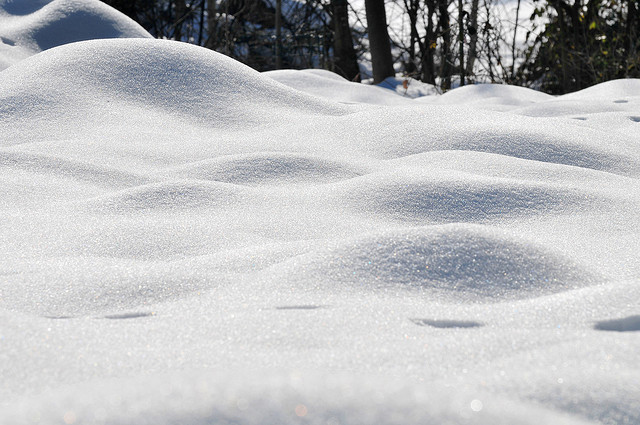Submitted by INDOT
The National Weather Service has declared a winter storm warning for most of central and southern Indiana, predicting up to 8 inches of new snow by late Saturday. Rising temperatures may result in rain, ice or sleet, which would reduce snow totals in some parts of the state.
Indiana Department of Transportation maintenance supervisors are closely monitoring evolving local forecasts. INDOT will deploy its yellow plow trucks ahead of any predicted accumulation on Indiana’s interstates, U.S. highways and state routes. Trained INDOT employees are on call to staff plow trucks around the clock with alternating shifts of 12 hours or more.
Know before you go
Each INDOT plow route takes 2-3 hours to complete with salt assisting in melting between passes. INDOT urges drivers to reschedule optional trips during and shortly after winter precipitation as that’s when road conditions will be the worst.
If you must venture out, there are several state resources drivers can access to “know before you go”:
- Most southern and eastern counties are still under a yellow travel advisory. Clark, Floyd, Harrison and Scott counties are still under an orange travel watch, which recommends only essential travel. Counties post updates as new information is available to http://www.in.gov/dhs/
traveladvisory or the Indiana Travel Advisory app for iPhone or Android. - INDOT maintenance staff report color-coded winter driving conditions on INDOT’s TrafficWise map at http://indot.carsprogram.
org . Road conditions are defined as: - Gray: Good, the road is clear
- Blue: Fair, speed is reduced due to isolated patches of snow and ice, and
- Violet: Difficult or hazardous, speed is reduced due to snow and/or ice covered pavement.
- For social media updates, find the INDOT Facebook and Twitter pages for your regional district at www.in.gov/indot/3074.htm.
Ice is most difficult
A few degrees can mean the difference between rain, freezing rain or snow, so ice can be difficult for forecasters to pinpoint. INDOT uses our statewide network of road and bridge pavement sensors and reports from law enforcement and the public to supplement local weather forecasts. As there are changes in forecasted and observed road conditions, our maintenance supervisors adjust their call-out of manpower, trucks and materials and shift resources as appropriate.
Ice can be the most difficult road conditions for drivers to navigate and plow crews to treat because four-wheel-drive vehicles and large trucks are no match if all tires are on ice. “Black ice” or “slick spots” can also be hard for drivers to distinguish from dry pavement.
Residual salt deployed during recent storms is still visible on many state highways. Granular salt deployed before and during the storm helps to add traction while lowering the temperature at which the ice melts.
Rain may bring flooding
If rising temperatures and rain causes existing snow cover to melt quickly, flooding may close low-lying roads. Property owners are encouraged to clear nearby storm inlets to allow for proper drainage.
INDOT urges drivers not to drive around barricades and high-water signs or across flooded roads. Receding flood waters may leave behind a thin sheen of ice on the road.
Driver tips
If you must venture out, there are several steps that drivers can take to minimize the risk of losing control on icy roads:
- Consult local weather forecasts to determine the latest timing and location of the storm.
- Choose direct routes instead of longer routes on higher-speed highways.
- Watch how salt trucks, emergency vehicles and other drivers are responding to the weather as visual cues for driving habits. Stay a safe distance and speed behind a plow at work as road conditions are always better behind one than in front.
- Take your foot off the gas and slow down gradually, especially on high-speed highways. No one should be traveling at interstate speeds during these conditions.
- Increase following distance and turn off cruise control.
Apply anti-lock brakes firmly when encountering ice. Pump brakes that are not anti-lock. Do not overcorrect with steering.

